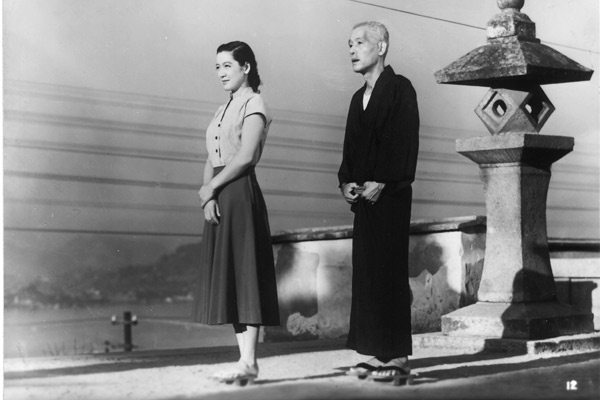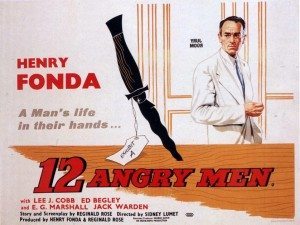The IMDB Top 250: An Overview
I ended the IMDB Top 250 with A Beautiful Mind, a film about a man who overcomes mental illness. John Nash chose to overcome schizophrenia by ignoring his delusions. I chose the path less taken, and engaged them, and won. As Oscar Wilde says, “The only way to get rid of temptation is to yield to it.” I started working my way through the list on and off around three years ago, seeing when a highly listed film was on TV, or if somebody at school had uploaded it to the LAN. But when those long summer holidays rolled around, and I had nothing better to do, I found myself loading up my laptop, and slowly but surely rolling that stone up that hill…
The major problem with trying to tackle a user-generated list is that it is constantly changing, so that by the time I finished, I had watched several more films than just the ones presently on the list. At times it felt like the closer I was getting to finishing the list, the more new films would get promoted. The other thing that is perplexing is the range, which runs from Bergman to Bollywood, French New Wave to Spaghetti Westerns. What makes TV series so compelling is knowing roughly what it is you are going to watch next based on experience of watching prior episodes. However, when working through films that sometimes have no relation to each other apart from being highly rated, this can be a daunting experience.
If I have a lot of free time (and I usually do being a humanities student) I have the tendency to mellow out, streaming one film after the other, and going from a Charlie Chaplin comedy to something as long and forbidding as Judgment at Nuremberg, requires a complete change of mood. But this, I believe, is where the joy of working through the list lies. It is like no other “best of” list on the internet because it determined entirely through popular opinion. This allows some odd inclusions, such as Untouchable, a sort of racist French comedy, which is rated as the 52nd greatest movie ever made, and How to Train Your Dragon, which I really enjoyed, but in no way should be higher rated than classics such as Network or There Will Be Blood. Despite these critical anomalies, it still serves as the most useful entry point to Cinema as a whole, as it contains the best of Hollywood, Independent, and Foreign Films, from 1921 to 2013.
For me, the top 250 is only the base camp. Everest remains.
Certain experiences are embedded in our collective popular consciousness, and seeing them properly for the first time after the Family Guy parodies or the appropriation in lesser movies is akin to that wondrous joy of seeing a painting in a museum after only ever seeing a print. Moments such as “Frankly my dear, I don’t give a damn” in Gone With The Wind, or the chase through the sewers of Vienna in The Third Man, or that tiny dot in the distance slowly turning into a man like a dream in Lawrence of Arabia, or Cary Grant being chased by a cropduster in North by Northwest… These are all part of the cultural fabric of our society, and the signifiers that help us define who we are. (Albeit, in my own personal life I have found that “Here’s looking at you Kid” no longer works as a chat up line, and neither does shouting “Stella” really loud outside a girls window.) Also, the more films you watch the more likely you are to understand the deeper thematic concerns of other forms of narrative. For example, to cite everyone’s favourite TV show, Breaking Bad has been alternately described as a modern day version of Scarface, a postmodern western, and contains numerous diner scenes unavoidably reminiscent of Pulp Fiction. By knowing what precedes with regards to cinematic language, the joy from viewing invariably increases.
English language cinema dominates, and the first non-English language movie to appear on the list is Seven Samurai (#16). But this is not because foreign cinema is poorly rated, it is because films need at least 25000 votes to enter the list. For example, Tokyo Story, no.1 on the BFI directors list is rated 8.2, but because it only has 17000 votes, it is still not on the list. If more people simply saw it, it would be on the list. Film Four is the best mainstream way for the average viewer to see art-house and foreign movies, but these films are usually screened way too late at night, drastically slashing the amount of people who are going to want to watch it. If it was decided to screen foreign movies at 9, then there would be better cross-cultural understanding of what makes movies great, regardless of where they come from. The great auteurs of cinema; Kurosawa, Bergman, Fellini, Scorsese, Allen, Wilder, Hitchcock; realise that what makes a movie great is not its subject but its enduring humanity, the ability to express through cinema the universal concerns of average, and not-so-average human beings. The subject always changes, but the humanity remains.
Would I recommend the list? It took me around three years on and off to complete, and although it took a very long time, it has been a richly rewarding experience. So I would recommend it, but only to people with a lot of spare time, and not a lot of friends. The question for me is: what next? Well, there’s the BFI top 250, The AFI Top 100, Roger Ebert’s Great movies, and most importantly, the Criterion collection, which according to Wikipedia contains around 700 movies. For me, the top 250 is only the base camp. Everest remains.
Below are my ten hidden gems of the IMDB Top 250, the films you may skim over, because on the surface they are in black and white, are very old, and look boring, but are actually surprising classics in their own right. They are in no particular order.
- Witness For The Prosecution (Billy Wilder, 1957)
- 12 Angry Men (Sidney Lumet, 1957)
- Anatomy of A Murder (Otto Preminger, 1959)
- The Treasure Of The Sierra Madre (John Huston, 1948)
- All About Eve (Joseph L. Mankiewicz, 1950)
- Wild Strawberries (Ingmar Bergman, 1957)
- The 400 Blows (Francois Truffaut, 1959)
- The Man Who Shot Liberty Valance (John Ford, 1962)
- Ikiru (Akira Kurosawa, 1952)
- M (Fritz Lang, 1931)




Comments (1)
will check out the hidden gems you speak of towards the end
i’m also working my way through the top 250 at the moment